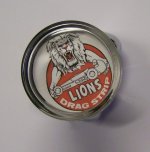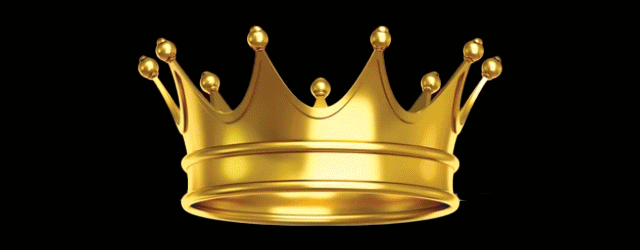JDMeister
Forum Moderator
- May 1, 2021
- 59,661
- 27,891
The Cost of Owning My First Car
When I was sixteen, I bought my first car, a 1951 Mercury. I paid $300, and insurance was $500 per year. It was all on me. Owning a car comes with ongoing costs, such as gasoline, maintenance, tires, and any improvements you might want to make.
As a young teenager, I soon discovered how to minimize these costs. Of course, I changed my own sparkplugs and oil. In those days (1957), sparkplugs lasted about 5,000-10,000 miles. And distributor points needed attention and replacement.
Tires did not hold up as well in those days. Flats and blowouts were common, and tires were expensive. If you had little money, used tires and re-caps (re-treads) were available. White sidewalls were the way to go in those days. The thinner white walls were replacing the wide white walls of the past. Service stations always had a rack of used tires with some remaining tread and were very cheap. Re-treads cost a bit more but were half the price of new tires. Later, re-treads for autos were banned due to safety concerns, but in 1957, safety was not high on the list. Seat belts did not appear for another six or seven years. If you crashed, there was a good chance you would be thrown through the windshield, but that only happened to others, not us.
Gasoline was cheap, about 25 cents a gallon, but still, there were times when you needed help. In those days, gas stations did not lock their pumps at night. You could go to a closed station and drain the remaining gasoline from each hose into a gas can. After visiting a few stations, you would have enough gas to cruise a bit at zero cost. I was amazed at how much gas remained in each hose. Friends sometimes chipped in a quarter or fifty cents so we could cruise.
You definitely had to make some changes to your car to “customize” it. One step was to have one or two coils cut off your front springs, which would lower it to get the desired “rake.” Hubcaps were a very important and personal thing, and they were not cheap. You needed hubcap locks, or they would end up on someone else’s car. “Spinner” hubcaps were popular, as were “moons” and “baby moons.”
Custom upholstery was desirable. If you could scrape together $200-$300, you could get a tuck and roll interior done in Tijuana (I went several times with friends.) If that was not an option, there were a myriad of seat covers available at budget prices. Stores like Pep Boys had a huge selection.
You could replace your car’s grille with one from another make or year, and I put grille pieces from a 1953 Desoto in my 51 Merc. Junkyards, such as Calvin's carried anything you wanted.
Clutches and transmissions were often casualties due to racing and “laying rubber.” I overcame my clutch issues by having Stu’s Clutches (in North Long Beach), beef up my pressure plate. Used transmissions could be bought from junkyards for as little as $14 exchange. They came with no guarantee. Sometimes we just had to buy another. We helped each other swap transmissions and clutches almost weekly, it seemed.
Paint and pinstriping were additional costs for some. We would sometimes rent a paint booth and spray them ourselves. If you had the money, there were several big-name painters such as Larry Watson, who were available locally. The professionals were a big step up.
Once you had your car running well, you took it to Lion’s Drag Strip to see just how fast it was. Most of us came away disappointed. It seemed much faster on the streets.
My first car was pretty average, although I would gladly have it back today. It was a simpler time. I was very fortunate to have had those experiences and lived this long to remember what fun it was.


When I was sixteen, I bought my first car, a 1951 Mercury. I paid $300, and insurance was $500 per year. It was all on me. Owning a car comes with ongoing costs, such as gasoline, maintenance, tires, and any improvements you might want to make.
As a young teenager, I soon discovered how to minimize these costs. Of course, I changed my own sparkplugs and oil. In those days (1957), sparkplugs lasted about 5,000-10,000 miles. And distributor points needed attention and replacement.
Tires did not hold up as well in those days. Flats and blowouts were common, and tires were expensive. If you had little money, used tires and re-caps (re-treads) were available. White sidewalls were the way to go in those days. The thinner white walls were replacing the wide white walls of the past. Service stations always had a rack of used tires with some remaining tread and were very cheap. Re-treads cost a bit more but were half the price of new tires. Later, re-treads for autos were banned due to safety concerns, but in 1957, safety was not high on the list. Seat belts did not appear for another six or seven years. If you crashed, there was a good chance you would be thrown through the windshield, but that only happened to others, not us.
Gasoline was cheap, about 25 cents a gallon, but still, there were times when you needed help. In those days, gas stations did not lock their pumps at night. You could go to a closed station and drain the remaining gasoline from each hose into a gas can. After visiting a few stations, you would have enough gas to cruise a bit at zero cost. I was amazed at how much gas remained in each hose. Friends sometimes chipped in a quarter or fifty cents so we could cruise.
You definitely had to make some changes to your car to “customize” it. One step was to have one or two coils cut off your front springs, which would lower it to get the desired “rake.” Hubcaps were a very important and personal thing, and they were not cheap. You needed hubcap locks, or they would end up on someone else’s car. “Spinner” hubcaps were popular, as were “moons” and “baby moons.”
Custom upholstery was desirable. If you could scrape together $200-$300, you could get a tuck and roll interior done in Tijuana (I went several times with friends.) If that was not an option, there were a myriad of seat covers available at budget prices. Stores like Pep Boys had a huge selection.
You could replace your car’s grille with one from another make or year, and I put grille pieces from a 1953 Desoto in my 51 Merc. Junkyards, such as Calvin's carried anything you wanted.
Clutches and transmissions were often casualties due to racing and “laying rubber.” I overcame my clutch issues by having Stu’s Clutches (in North Long Beach), beef up my pressure plate. Used transmissions could be bought from junkyards for as little as $14 exchange. They came with no guarantee. Sometimes we just had to buy another. We helped each other swap transmissions and clutches almost weekly, it seemed.
Paint and pinstriping were additional costs for some. We would sometimes rent a paint booth and spray them ourselves. If you had the money, there were several big-name painters such as Larry Watson, who were available locally. The professionals were a big step up.
Once you had your car running well, you took it to Lion’s Drag Strip to see just how fast it was. Most of us came away disappointed. It seemed much faster on the streets.
My first car was pretty average, although I would gladly have it back today. It was a simpler time. I was very fortunate to have had those experiences and lived this long to remember what fun it was.



